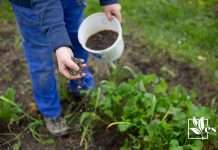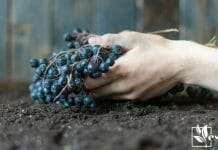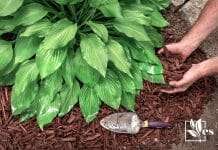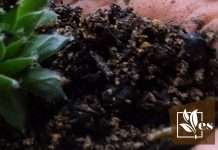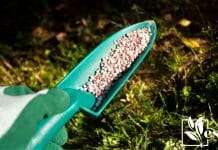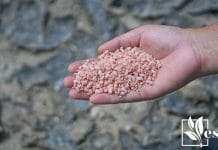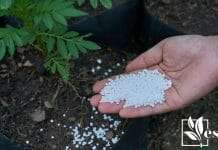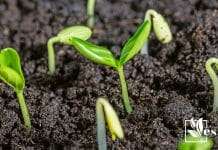Roses are one of the most adored flowers in gardens worldwide, with their vibrant blossoms and enchanting fragrances. To maintain their health and encourage prolific blooming, regular feeding is essential. I understand that there can be confusion regarding the frequency and type of fertilizer that should be used for roses. From my experience, feeding roses aligns closely with their growth phases and the seasons of the year.
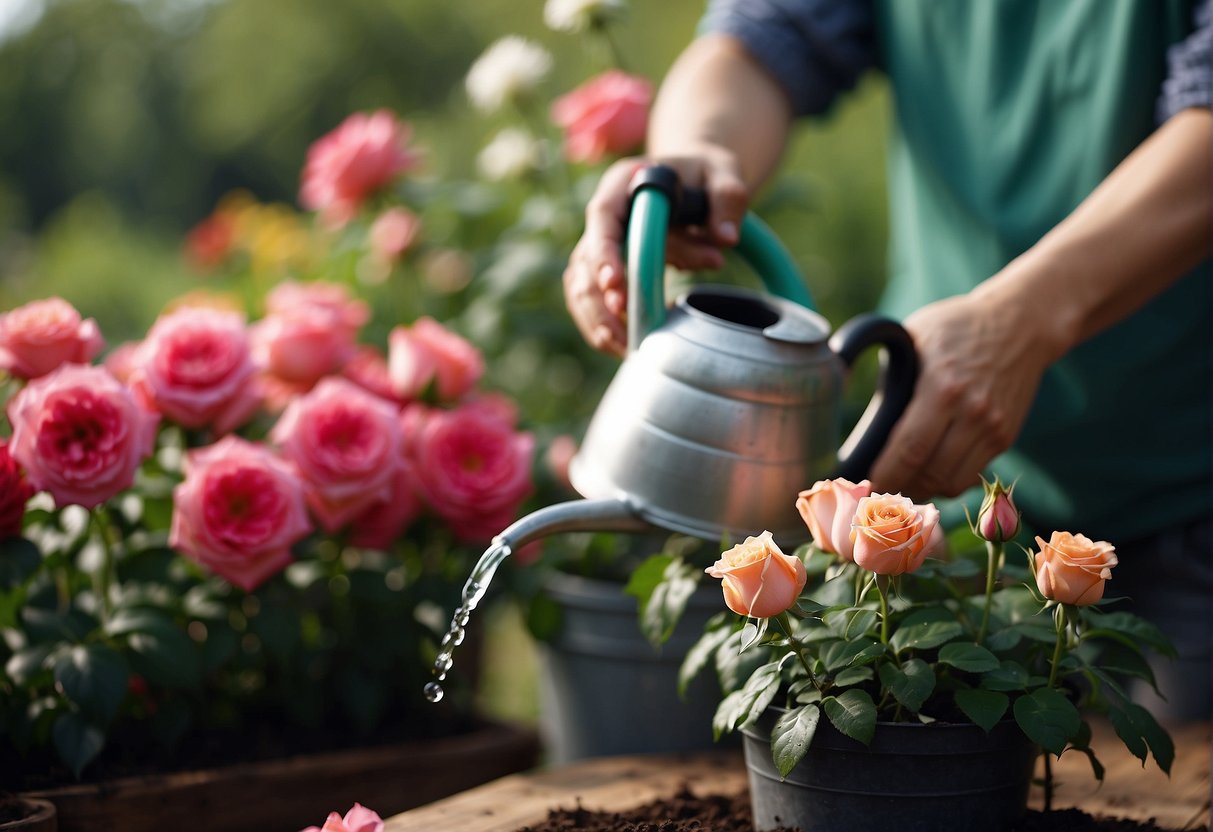
I recommend feeding your roses every four to six weeks during their growing season, which typically starts in spring and ends in late summer.
I would typically use a balanced, slow-release fertilizer to nourish my roses right after pruning, which is often done as the last frost of the season passes. It’s crucial to apply the fertilizer according to the manufacturer’s instructions, as over-fertilization can harm your roses. Additionally, I’ve found that incorporating organic supplements, like compost or aged manure, provides a boost of nutrients that helps in building healthy soil and supports robust rose growth.
JUMP TO TOPIC
Selecting the Right Fertilizer for Your Roses
Choosing the right fertilizer for your roses is essential to promote vigorous growth and stunning blooms. I will guide you through understanding soil nutrient requirements, the differences between organic and inorganic fertilizers, and how to choose the best type of rose fertilizer.
Understanding Soil and Nutrient Requirements
Before fertilizing, I always test the soil to determine its pH and nutrient levels. Roses thrive in slightly acidic to neutral soil (pH 6.0 to 7.0). They need macronutrients like nitrogen (N), phosphorus (P), and potassium (K), which support leaf growth, root development, and flower production, respectively. Additionally, incorporating organic matter can improve soil structure and fertility.
Comparing Organic and Inorganic Fertilizers
Organic fertilizers, such as compost, manure, bone meal, or fish emulsion, release nutrients slowly and improve soil health. In contrast, inorganic fertilizers, often synthetic, provide a quicker nutrient release. I weigh these options based on the immediate needs of my roses and long-term soil health.
Decoding Fertilizer Types and Their Components
Choosing the right type of fertilizer hinges on its components and how they suit my roses’ needs. I consider formulations:
- Balanced fertilizer typically has an N-P-K ratio such as 10-10-10.
- Slow-release fertilizers gradually deliver nutrients and reduce the risk of over-fertilization.
- Liquid fertilizers are fast-acting, ideal for a quick nutrient boost.
- Granular fertilizers are spread on the soil and release nutrients as they break down.
Each type has its use case depending on the growth stage of the rose and the existing soil conditions. My goal is to match the fertilizer type with the roses’ growth requirements to ensure healthy plants and abundant blooms.
Optimal Fertilization Techniques for Rose Gardens
As a seasoned gardener, my techniques have been honed over the years to ensure roses receive the right balance of nutrients throughout their growing cycle for a spectacular show of blooms.
Best Practices for Fertilizing through Seasons
In spring, I start fertilizing when the roses show signs of new growth, typically after the last frost date. Every five to six weeks thereafter, I continue feeding them until late summer, which prevents new growth that might be damaged by early frosts.
I stop fertilizing established roses by late summer to allow them to enter dormancy naturally.
I ensure that newly planted roses have settled with the help of nutrient-rich soil and wait until they’ve established before beginning any fertilization program. For those in containers, I apply a controlled release fertilizer at the beginning of the season as their soil tends to lose nutrients more rapidly.
Maximizing Bloom and Growth
During the peak growing season, I apply fertilizers rich in nitrogen to promote lush, green growth, transitioning to a phosphorus-rich fertilizer closer to the blooming timeframe to enhance flower production.
Aside from the granular feeds, I also incorporate mulching with organic matter to slowly enrich the soil and maintain moisture, which is essential for the roses’ root systems. Regular watering schedules are crucial, but I avoid overwatering, understanding that too much moisture can dilute the fertilizers and lead to root issues.
Annual pruning is equally important to remove deadwood and encourage new, vigorous growth that will yield more blooms. By combining these practices, I foster an environment where roses not only survive but thrive, producing vibrant colors and robust blooms that become the centerpiece of the garden.
Maintaining Health and Vibrancy in Roses
To ensure your roses remain healthy and vibrant, strategic feeding alongside addressing nutritional needs is essential. Here, I’ll guide you on feeding timetables and tackling deficiencies.
Recognizing the Importance of Timely Feeding
My experience with roses has taught me that consistent feeding is crucial for lush blossoms and robust foliage. Roses should be fertilized beginning in early spring when new growth is noticed, and again after each bloom cycle, to encourage more flowers. Avoid fertilizing roses late in the fall, as this can cause new growth that may be damaged by frost.
- Early Spring: Feed when new growth appears
- After Blooming: Fertilize after each flowering cycle
- Early Fall: Last feed to prepare for winter
Remember: Over-fertilization can lead to root burn, so follow instructions carefully.
Dealing with Common Nutritional Deficiencies
If I notice yellow leaves or poor growth, these may be signs of nutritional deficiencies. Nitrogen deficiency usually results in poor leaf growth, while phosphorus is essential for healthy root development and flowering. Potassium helps with overall plant health. If deficiencies are suspected, a balanced organic fertilizer or specific nutrient amendments can be added to the soil.
💥 Essential Nutrients:
Nitrogen (N) for foliage, Phosphorus (P) for roots and blooms, Potassium (K) for overall health. Include micronutrients like iron and magnesium as required.
I always recommend soil testing before applying any correctional fertilizers to pinpoint exactly what my roses need. Soil tests help avoid overfeeding and the potential of damaging the plants. Through careful monitoring and timely feeding, one can maintain the health and vibrancy of roses effectively.
Safeguarding Your Roses from Fertilizer-Related Issues
Over-fertilization can lead to root burn, negatively affecting rose health.
In my experience, the key to preventing fertilizer-related issues in roses is balanced and timely application. Here’s how I protect my roses:
- Fertilizer Choice: I opt for a mild fertilizer; organic options tend to release nutrients more slowly than synthetic, reducing the risk of over-fertilization.
- Application Rate: I follow the recommended rates on the fertilizer label, keeping in mind that less is often more. If I’m using a strong inorganic fertilizer, I’ll dilute it to prevent root burn.
Observe New Growth: It’s essential to monitor new growth, as over-fertilization can cause rapid and weak development.
💥 Timing: I fertilize roses during their active growing periods and stop feeding in late summer to allow them to prepare for dormancy.
I’ve found that watering roses before applying fertilizer helps prevent the uptake of nutrients too quickly, which can also lead to root burn. Lastly, I always keep an eye on the soil’s condition; sandy soils may require more frequent fertilization due to their lower nutrient and water retention capacity.



